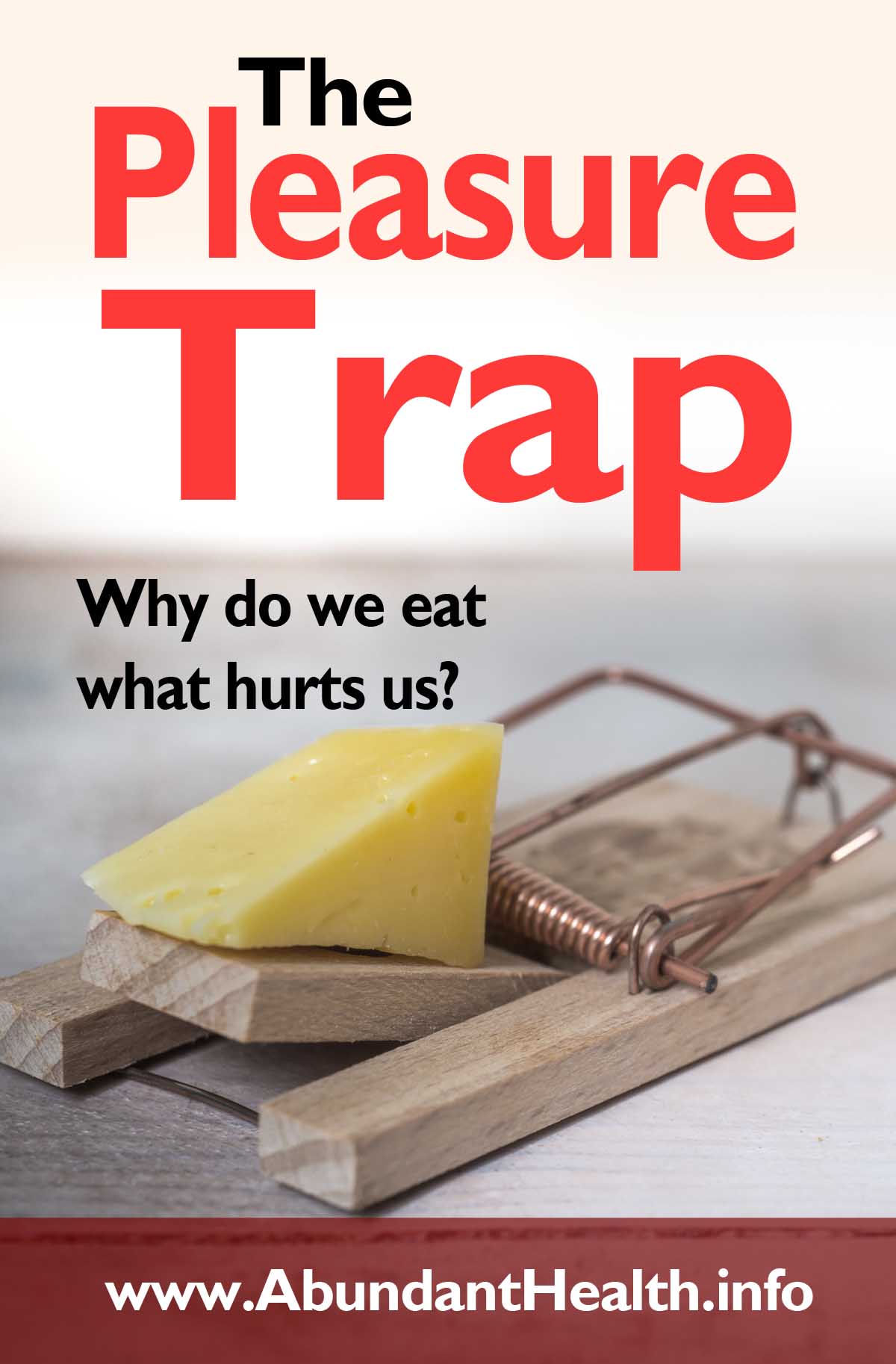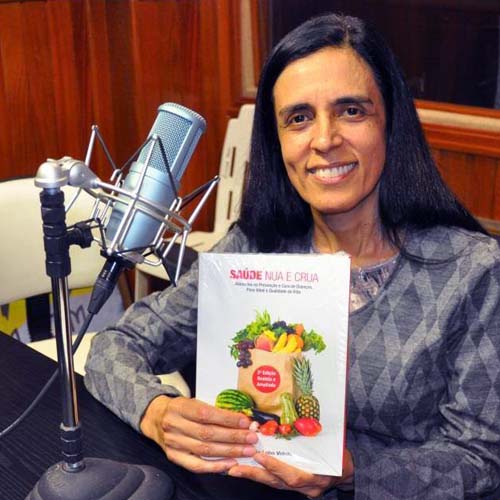I know it’s not healthy, but…
Have you ever enjoyed an extra cheese pizza, an iced soft drink, or some temptation in the form of a dessert, like a chocolate cream cake, with filling, icing and chocolate chips everywhere, even though you know they are not healthy? Of course, yes! I think all of us. I hope I have not aroused any desire. Come and read on.

Even though you know that some foods are harmful, you still can’t resist, like a moth attracted to light. Why does this happen? In fact, explains Dr. Neal Barnard in his book “Power Foods for the Brain”, a war is being waged in your brain, and the weapon used is called dopamine. This weapon is powerful enough to kill your desire to be healthy and could end up killing you “.1)BARNARD, Nal B. (2013). Power Foods for the Brain: An Effective 3-Step Plan to Protect Your Mind and Strengthen Your Memory. New York: Grand Central Life & Style., 2013, p. 177.
Just when the Beatles reached the height of their popularity. drug culture also exploded. Marijuana, hallucinogens, cocaine and heroin were widespread around the world. The musicians seemed to be especially vulnerable to the deadly effects of drugs and alcohol. Jimi Hendrix, Janis Joplin, Jim Morrison, and guitarist Brian Jones of the Rolling Stones, were part of the fateful Club 27, so named because of the age at which they all died. But if the drugs are so harmful why do people continue to use: The reason is dopamine – which is not only related to drugs.
Dopamine
In your brain is located the reward center, where dopamine is stored in tiny rounded pockets within the brain cells, continues explaining Dr Barnard. Dopamine is a neurotransmitter, that is, a chemical substance used in the nervous system. It is part of the set of natural so-called opiates because they produce and awaken feelings of relaxation, pleasure and well-being.
Dopamine is literally waiting for you to eat something – something really tasty. As soon as you eat, it is released from each of these cells, creating a “little party” in your brain, giving you an incredibly pleasurable sensation.2)Idem, p. 179-180
Your brain is programmed to do just that, using dopamine to remind you of scents, flavors, colors and sounds. So today, tomorrow and every day, you go back to feed yourself and stay alive. The brain organizes your list of priorities in such a way that you stop what you are doing and prioritize your next dopamine release – your food ingestion and the resulting survival are always guaranteed. The same goes for sex. Not that sex keeps you alive, but it also receives favorable treatment so that the species is preserved.
After an intense dopamine interlude, a second type of pleasure neurotransmitter floods the brain. It is the so-called endorphin, which causes a feeling of relaxation, also very pleasant. These two neurochemicals often work together, with a double reward of pleasure.
Dopamine, however, explains Drs. Lisle and Goldhamer, does not relate much to longer-lasting periods of well-being, which we call happiness. This state of happiness is regulated by a different neurochemical, especially serotonin. When you mistreat your body with unhealthy foods, lack of sleep, chronic lack of exercise or drug use, this long-lasting state of happiness is also seriously compromised.3)Lisle; Goldhamer, 2003, Pleasure Trap: Mastering the Hidden Force that Undermines Health & Happiness. Summertown, TN: Healthy Living Publications, p. 157-158.
The Kidnapped Reward Center
This perfectly balanced system can be hijacked by drugs. Marijuana, cocaine, heroin and virtually all drugs of abuse trigger an enormous release of dopamine. The same goes for a glass of wine, a cigarette or a cup of coffee. That is why people use such substances. The legal and illegal drug market has been manipulating the release of dopamine. Drugs are much more powerful dopamine triggers than food and sex; This is why addicts often lose interest in food, sex and just about everything else in life in favor of their drug.
The food industry has found a way to enter the game. The release of dopamine that your brain triggers when eating an apple or an orange is actually quite modest. Processed foods are manufactured in order to increase the dopamine release. As a consequence, these products are less and less like food and more and more like drugs.

Three Weapons of the Industry
1. Sugar
A papaya, a mango or a pear are pleasantly sweet, but why stop there? Thus, the sugar industry extracts and purifies the juice from sugarcane, resulting in pure and concentrated sucrose or refined sugar. In the brain, sugar stimulates the release of dopamine, endorphins and other natural opiates.4)Ibid
Sugar thus takes on a prominent position in the food industry, marking a massive presence in an increasing number of products. The use of this weapon has really been a success – not for health, but for sales!
2. Fat
Dr. David Kessler, in his book The End of Overeating, quotes the work of Dr. Adam Drewnowski, 5)Dr. Adam Drewnowski is professor of Epidemiology at the University of Washington, spent thirty years of his life researching the human taste, preferences and food choices. leader of international renown in the prevention and treatment of obesity. Dr. Drewnowski found that people don’t like sugar alone, but its combination with fat.
Fat, he said, “is responsible for the texture, flavor and aroma of many foods and largely determines the palatability 6)Palatability:. That is pleasant to taste of a diet.” In addition, similar amounts of fat and sugar make it a palatable food.7)KESSLER, David A. (2009). The End of Overeating: Taking Control of the Insatiable American Appetite. New York: Rodale, p. 13.
An example of this “fatal combination” is chocolate. Chocolate is so “special” that it won a specific chapter, in the book Saúde Nua e Crua [Health – Naked and Raw]. The two main ingredients of chocolate are sugar and fat, in an almost irresistible caloric combination and also extremely effective in releasing dopamine.
3. Salt
“When the mixture is correct, the food becomes more stimulating. Eating products with a high concentration of sugar, fat and salt makes people crave for more products with a high concentration of sugar, fat and salt”, says Dr. Kessler.8)Idem, p. 14.
“People love salt … salt completes the taste of everything … and they devour it daily in almost everything they buy … People yearn to eat salty foods”;9)MOSS, Michael. (2013). Salt, Sugar, fat: How the Food Giants Hooked Us. New York: Random House, p. 270, 275. the trap continues to be set and continues to capture its victims.
Vicious Circle
When you don’t feel well, you instinctively try to do something to solve your problem. In this case, you hardly associate the problem with a lack of good sleep, exercise or poor choices of food. You will rarely identify, for example, caffeinated drinks, chocolate, fatty foods, TV until late at night, or a sedentary lifestyle as factors to be reviewed.
On the contrary, you usually suspect that a pleasure deficiency is the cause and conclude that the solution is to eat something very “tasty”. During the pleasure cycle, the brain releases dopamine, and you feel good. The action is repeated, more dopamine is released and you continue to feel more pleasure. By reinforcing the pleasure, the mechanism guarantees the repetition of the action. “That’s why the pleasure trap is so cunning and powerful.”10)Lisle; Goldhamer, 2003, op. cit., p. 160.

“Leaving a bad habit is already a difficult task, but breaking free from the vicious circle of pleasure can be the biggest challenge of your life,” warns Drs. Lisle and Goldhamer. “Changing just one factor, such as removing caffeinated drinks or an ordinary glass of milk, will make a person feel even worse – the so-called withdrawal syndrome.
Common symptoms are headache, nausea, fatigue and anxiety also characteristic of drug withdrawal in general. This is because the body is trying to maintain the continual intake of vicious substances”.11)Fuhrman, Joel (2011) Eat to live:.. The Amazing Nutrient-Rich Program for Fast and Sustained Weight Loss, New York: Little Brown, p . 204. In addition, healthy eating habits are often seen initially as “devoid of pleasure and bland. It is no longer a mystery why New Year’s resolutions related to eating habits do not last more than a few days.”12)Lisle; Goldhamer, 2003, op. Cite, p. 160.
Back to the subject: Why do you eat certain foods even though you know they are not healthy? Because they release a dopamine bath in your brain. Dopamine intensifies the taste and colors of food, and you continue to consume each one to gain that well-deserved and expected feeling of well-being.13)Barnard, 2013, op. cit., p. 180-186.
The natural integration between serotonin and dopamine, for example, or between the states of happiness and pleasure, has been partially lost. This integration is compromised by poor eating and lifestyle habits. When using foods that are not natural and healthy, you’re taking shortcuts to produce extra dopamine. The result is always the same: your health, contentment and happiness are compromised and impaired.14)Lisle; Goldhamer, 2003, op. cite, p. 159.
And now?
This situation can be reversed, shows Dr. Barnard. You can get your dopamine in a healthy way. And don’t forget physical exercise, which also triggers the release of endorphins and dopamine. If you have an active sex life, this is another natural way. But with regard to food, how to get rid of the powerful trap of foods that are harmful to health?
The first step is to establish strict personal rules and simply stop consuming unhealthy products. Dr. Barnard explains that it is easier to stop consumption at once than to provoke yourself with an occasional consumption.
Those who insist on saying, that they will eat only once in a while, or just a little does not hurt, will not succeed. The problem, he continues, is that every little bit of these foods triggers an explosion of dopamine that reinforces your desire to continue making use of those foods. The addiction will continue to speak louder.
Each bite will now make it harder to say no the next time. The vicious circle needs to be broken. The first few days are the most difficult, but over time, you will forget about the extra amount of dopamine that these foods release, and you will find pleasure in eating natural foods. With that, dopamine in the right dosage will suffice.15)Barnard, 2013, op. cite, p. 186-190.
The need to remove any food addiction is also highlighted by Dr. Fuhrman. The introduction of healthy foods and the reprogramming of tastes is an effective way to permanently get rid of the pleasure trap.16)Fuhrman, 2011b, op. cite, p. 206.
A Forceful Motivation
Another step in the process of reprogramming the body is looking for other motivators. See Paul McCartney’s experience. At a Sunday lunch, where the main course was roasted lamb, he was sitting next to the window. Watching the sheep grazing on the hills and the meat on the plate, he concluded that he no longer wanted to be part of that act of cruelty. So he decided never to eat meat again.

For many, an important motivator has been a greater awareness of the environmental damage caused by the consumption of animal foods and processed products. For others, new medical research is warning about the health risks of those foods.
Another strong motivating element has been the desire to return to eating according to the original plan of creation described in the biblical book of Genesis. Perhaps you want to help the body cope with an illness, or just to go back to an optimal fitness level. Any and every motivation is welcome in this phase of forming new eating habits.
Whatever your family history or current condition, you can overcome your physical dependence in relation to the addictive properties of animal and processed foods. Through willpower, physical endurance and the use of external elements of motivation, change is absolutely possible. You will develop a new taste for the natural flavors of food, forget the old tastes and no longer feel the urge for the harmful tastes of the past, guarantees Dr. Esselstyn.17)Esselstyn, Cadwell B. (2008). Prevent and Reverse Heart Disease: The Revolutionary, Scientifically Proven, Nutrition-Based Cure. New York: Penguim Group, p. 14.
This article was translated and published with permission of the author from the book: Saúde Nua e Crua (Health – Naked and Raw). The book is available in Portuguese.

Marcia Lobo Vidoto studied Nutrition at the University of São Paulo, obtained two Master’s degrees in Massachusets, and a postgraduate degree in vegetarian nutrition from the Cornell University in New York. She is the author of two books and promoting a healthy lifestyle through lectures all around the country of Brasil.
References
| ↑1 | BARNARD, Nal B. (2013). Power Foods for the Brain: An Effective 3-Step Plan to Protect Your Mind and Strengthen Your Memory. New York: Grand Central Life & Style., 2013, p. 177. |
|---|---|
| ↑2 | Idem, p. 179-180 |
| ↑3 | Lisle; Goldhamer, 2003, Pleasure Trap: Mastering the Hidden Force that Undermines Health & Happiness. Summertown, TN: Healthy Living Publications, p. 157-158. |
| ↑4 | Ibid |
| ↑5 | Dr. Adam Drewnowski is professor of Epidemiology at the University of Washington, spent thirty years of his life researching the human taste, preferences and food choices. |
| ↑6 | Palatability:. That is pleasant to taste |
| ↑7 | KESSLER, David A. (2009). The End of Overeating: Taking Control of the Insatiable American Appetite. New York: Rodale, p. 13. |
| ↑8 | Idem, p. 14. |
| ↑9 | MOSS, Michael. (2013). Salt, Sugar, fat: How the Food Giants Hooked Us. New York: Random House, p. 270, 275. |
| ↑10 | Lisle; Goldhamer, 2003, op. cit., p. 160. |
| ↑11 | Fuhrman, Joel (2011) Eat to live:.. The Amazing Nutrient-Rich Program for Fast and Sustained Weight Loss, New York: Little Brown, p . 204. |
| ↑12 | Lisle; Goldhamer, 2003, op. Cite, p. 160. |
| ↑13 | Barnard, 2013, op. cit., p. 180-186. |
| ↑14 | Lisle; Goldhamer, 2003, op. cite, p. 159. |
| ↑15 | Barnard, 2013, op. cite, p. 186-190. |
| ↑16 | Fuhrman, 2011b, op. cite, p. 206. |
| ↑17 | Esselstyn, Cadwell B. (2008). Prevent and Reverse Heart Disease: The Revolutionary, Scientifically Proven, Nutrition-Based Cure. New York: Penguim Group, p. 14. |
Leave a Reply